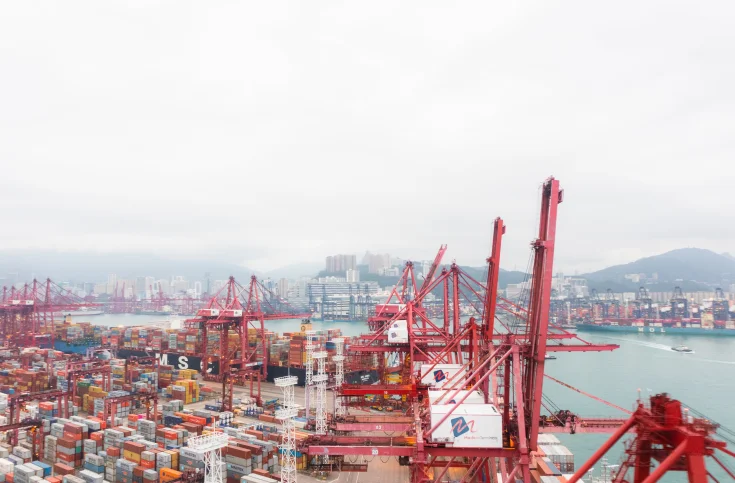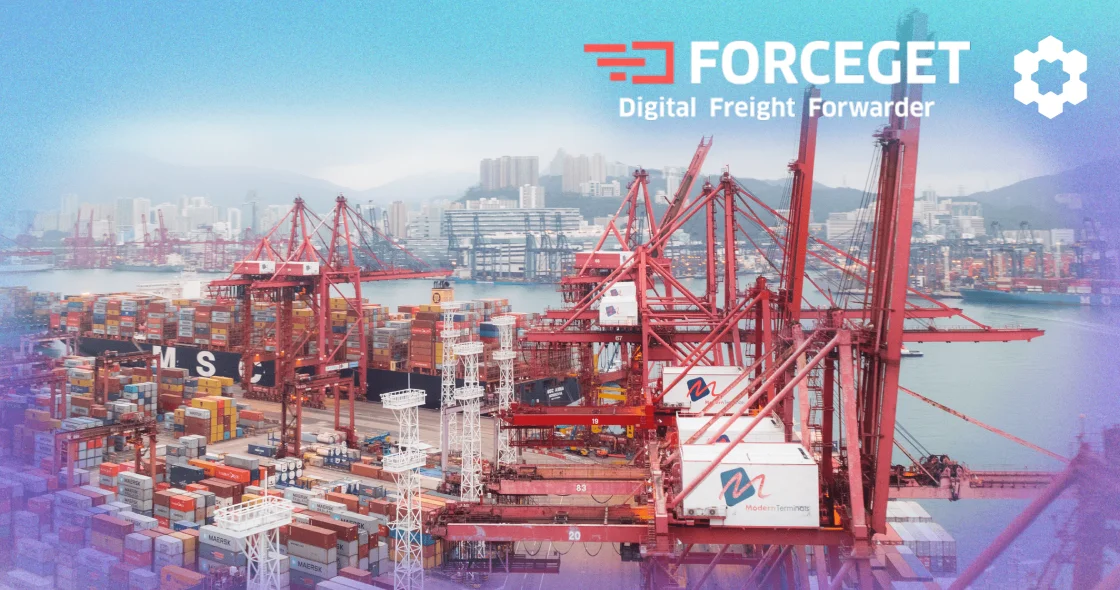Investment in warehouse automation is surging, as evidenced by a 2023 report from Scala Consulting. The report reveals that 42% of businesses in manufacturing, retail, and third-party logistics (3PLs) intend to allocate funds equivalent to or exceeding their annual warehousing expenditures for automation within the next five years.
Retail companies are now prioritizing scale capability, enhanced flexibility, heightened efficiency, and reduced supply chain costs. In April 2022, Amazon itself launched the $1 billion Amazon Industrial Innovation Fund (AIIF), aimed at revolutionizing supply chain and logistics with a focus on automation and workplace robotics. The investment responds to changing customer preferences for online shopping, emphasizing faster delivery and enhanced experiences.
As a result, many ecommerce sellers and their 3PLs are now actively seeking innovative approaches to leverage warehouse automation, intelligence, and unmanned systems to stay on top of trends and ahead of the competition.
In this blog post, we’ll step into the future warehousing, where today’s forward-thinking business visionaries like Amazon are revolutionizing operations to pave the way for a brighter and more efficient supply chain.
What is Amazon Warehouse Automation?
Warehouse automation involves the use of advanced technologies and robotics to optimize and streamline various aspects of the fulfillment process. This includes tasks like inventory management, order picking, packing, and shipping.
Automated systems, such as robotic arms, conveyor belts, and sorting machines, are employed to enhance the speed and efficiency of order processing. The goal is to reduce human labor, minimize errors, and meet the high demand for quick and accurate order fulfillment in the rapidly growing ecommerce industry.
Amazon’s fulfillment centers are notable examples of how warehouse automation has been extensively implemented to handle the complexities of large-scale online retail operations.
The Current State of Warehouse Automation
Statistics from Ireland’s leading fulfillment service provider, Meteor Space, show that 40% of businesses are actively planning substantial investments in automation for the near future, with an expected increase to 60% by 2025.
Fashion retailers and manufacturers are among those embracing this trend, progressively adopting automation to meet the growing demands of ecommerce and omnichannel retail.
How will retailers adopt automation?
Gartner’s projection suggests that 75% of large enterprises will integrate smart robots into their warehouse operations by 2026. This prediction is underpinned by several key factors, including:
- Warehouses grappling with multiple challenges, such as labor shortages, rising labor expenses, and the surging demand of ecommerce. Automation emerges as a solution to confront these issues, enhancing operational efficiency, precision, and productivity.
- The increasing affordability and sophistication of smart robots make them more accessible to businesses of all scales, thereby motivating their adoption.
- The burgeoning demand for ecommerce has exerted mounting pressure on warehouses to fulfill orders swiftly and accurately. Automation offers a means to enhance the efficiency and precision of order fulfillment.
This Gartner prediction aligns with broader trends in the logistics industry. For example, a recent survey by McKinsey & Company shows that 80% of logistics executives deem automation as essential for the industry’s future.
The integration of smart robots into warehouse operations is poised to bring about significant changes within the logistics sector. It is expected to yield increased efficiency, accuracy, and productivity, alongside cost reductions.
Amazon, for instance, has recently introduced Titan, a mobile robot designed for handling heavyweight tasks (up to 2,500 lbs). This cutting-edge technology is set to redefine the way products are transported within the company’s fulfillment centers, not only streamlining operations but also prioritizing safety and efficiency.
Drawing on over a decade of mobile robotics innovations at Amazon, Titan emerges as a powerhouse, boasting the ability to lift double the weight of its predecessor, Hercules, the widely deployed robot in its operations. Meanwhile, taking inspiration from the Xanthus mobile robot, Titan employs state-of-the-art computer vision, obstacle detection, and user control, elevating its navigational system to unparalleled heights.
This transformation is likely to shift the role of warehouse workers, who may increasingly be responsible for overseeing and managing Amazon warehouse robots, as opposed to engaging in manual tasks.
Other Reasons Why Warehouse Automation is Expected to Accelerate
Aside from the need for increased efficiency in operations, here are the other key reasons why warehouse automation is expected to grow:
1. Data Creates Competitive Advantage
Warehouses are in a better position to utilize and capitalize on the data provided by automation.
Warehouses can uniquely harness and leverage the data provided by automation due to their capacity to generate extensive data daily, ranging from inventory levels to order fulfillment times. Automation enables warehouses to collect and analyze this data more efficiently and effectively than manual processes.
Here are some specific ways in which warehouses can harness and capitalize on the data provided by automation:
- Enhanced Inventory Management: Warehouses can automate inventory management with customizable inventory and forecasting tools like SoStocked to be able to track their inventory levels in real-time. With improved inventory visibility, they can avoid stockouts and overstocking, resulting in substantial cost savings and improved customer satisfaction.
- Optimized Order Fulfillment: Analyzing order fulfillment data allows warehouses to pinpoint areas for efficiency improvement, leading to quicker order fulfillment times and reduced shipping costs.
- Improved Demand Forecasting Accuracy: By scrutinizing historical sales data and other relevant factors, warehouses can forecast future demand for products. This information can be used to fine-tune inventory levels and production schedules.
- Better Customer Service: Customer data analysis aids warehouses in identifying areas where customer service can be enhanced. This information can be utilized to develop targeted customer service programs and expedite the resolution of customer issues.
2. Higher Demand for Warehouse Automation
In this section, we’ll discuss whether American manufacturers are insulated from the rapid pace of growth which may necessitate automation.
The question of whether US manufacturers are shielded from the rapid growth that may necessitate automation is a multifaceted issue with no simple answer. Several factors come into play when each manufacturer contemplates the decision to automate. These factors include the specific industry they operate in, the size of the company, and the financial resources at their disposal.
Certain American manufacturers may not feel the immediate need to embrace automation, mainly because they already function with exceptional efficiency. For example, specific manufacturers in the automotive industry have made significant automation investments, allowing them to achieve elevated production rates for vehicles.
Conversely, other American manufacturers may face significant pressure to embrace automation in order to keep up with the swift pace of growth. For instance, manufacturers in the ecommerce sector contend with growing consumer demand, necessitating the rapid and accurate fulfillment of orders, a challenge that warehouse automation can effectively address.
The benefits of automation encompass:
- Heightened Productivity
- Reduced Labor Costs
- Enhanced Precision
- Diminished Shipping Times
- Augmented Customer Satisfaction
Nevertheless, warehouse automation also presents certain challenges, including:
- The high cost of automation equipment
- The necessity to train workers in the operation of automation equipment
- The potential for job displacement
3. Efficiency vs. Cost
The push to maximize efficiency in warehouse operations and how it might outweigh the initial costs of modernizing, as opposed to the hesitations seen in manufacturing.
A growing impetus exists to maximize efficiency in warehouse operations due to various factors, including the surge in ecommerce, labor shortages, and heightened customer expectations (e.g., same-day delivery).
Modernizing warehouse operations, while initially costly, can yield substantial long-term cost savings. Through task automation, waste reduction, and improved workflows, warehouses can enhance efficiency and curtail operating expenses.
Benefits of Warehouse Modernization:
- Increased Efficiency: Warehouse automation outperforms manual tasks in terms of speed and accuracy, leading to significant enhancements in order fulfillment times and precision.
- Lower Labor Costs: Automation can reduce the workforce required to operate a warehouse, resulting in substantial labor cost savings.
- Improved Safety: Automation mitigates the risk of workplace accidents and injuries.
- Increased Customer Satisfaction: Modernized warehouses with improved efficiency and accuracy offer faster order fulfillment and fewer errors, contributing to higher customer satisfaction.
Costs of Warehouse Modernization:
- The initial cost of investing in warehouse automation equipment can be substantial.
- Workers may necessitate training to operate new automation equipment.
- There is a potential for job displacement, as certain human-performed tasks may become automated.
Despite the initial investment, many warehouses are discovering that the advantages of modernization outweigh the expenses. A recent study by McKinsey & Company indicates that 83% of logistics executives consider automation essential for the industry’s future.
4. Emphasis on Supply Chain Resilience Renewed
The critical importance of resilient and adaptable supply chains has been underscored once again, with the spotlight intensifying due to the impact of Covid-19. This renewed focus follows a tumultuous 2019 marked by geopolitical tensions between the US and China, prompting companies to reassess the robustness of their supply networks.
Companies are now contemplating strategies to bolster their supply chain resilience, considering measures such as reshoring operations, regionalizing supply chains, and adopting dual sourcing approaches involving two suppliers. The disruptions caused by staggered lockdowns across different geographical locations during the pandemic unveiled vulnerabilities in supply chains, prompting a collective realization of the need for greater resilience.
A recent study conducted by Bank of America Merrill Lynch has unveiled a striking revelation: more than 83% of sectors heavily reliant on overseas supply chains are actively considering or have already initiated plans to shift their supply chains. Key to this transformation is the recognition that the ability to automate manufacturing facilities closer to home markets serves as a pivotal enabler for building resilient and responsive supply chains.
The Amazon Effect: Warehouse Automation and Ecommerce Giants

The “Amazon effect” refers to the impact that the digital marketplace giant Amazon.com has had on traditional retail markets and business models. This term is often used to describe the significant changes and disruptions that have occurred in various industries as a result of Amazon’s business practices, strategies, and the overall shift toward ecommerce.
In this section, we’ll discuss how, through warehouse automation, Amazon has pioneered innovations such as one-day and same-day delivery, which has raised the bar for logistics in the retail industry and prompted competitors to invest in similar capabilities.
Fulfillment by Amazon (FBA) and the Push for Automation
FBA is a program that enables sellers to sell their products on Amazon, with the ecomm giant responsible for the storage, packing, and shipping of orders. Sellers favor FBA due to various benefits, including:
- Fast Shipping: FBA sellers can provide Prime shipping, ensuring products reach customers within two days or less.
- Storage Solutions: Amazon stores the merchant’s products in its warehouses, freeing up the merchant’s space and resources.
- Customer Service: Amazon manages customer inquiries and returns for FBA products.
When a customer orders an FBA item, Amazon retrieves it from the warehouse and prepares it for shipment. Amazon employs different types of warehouse robots in its fulfillment centers to expedite this process, including:
- Automated Guided Vehicles (AGVs): AGVs are robots that move product pallets within the warehouse without human intervention.
- Robotic Picking Systems: These systems select individual products from shelves and place them in totes.
- Automated Packing Machines: These machines pack products into boxes for shipment.
The “Amazon Effect” has significantly impacted the warehousing industry, compelling other warehouses to modernize and compete with the efficiency and speed of Amazon’s FBA program.
3PLs, for instance, can modernize through several means, including:
- Investing in Automation Technology: Automated technologies enhance efficiency and productivity.
- Optimizing Warehouse Layouts: Layout optimization reduces travel times and improves workflows.
- Adopting New Technologies: Implementing technologies like RFID tags and real-time inventory tracking systems enhances inventory visibility and control.
In sum, modernized warehouses are better equipped to compete with Amazon’s FBA program and meet customer demands.
Fulfillment by Merchant (FBM) and the Role of Independent Warehousing
FBM program is a service that empowers sellers to list their products on Amazon while retaining full control over the storage, packaging, and shipping processes of customer orders. FBM sellers bear the complete responsibility for a spectrum of tasks, encompassing inventory management, as well as the handling and dispatch of orders to their respective customers.
Pressures Encountered by FBM Sellers to Automate for Competitive Edge
FBM sellers are under growing pressure to implement warehouse automation to uphold competitive shipping times and satisfy customer expectations. Amazon’s FBA program, offering Prime shipping, has set a standard where customers expect to receive orders within two days or less. FBM sellers aspiring to compete with Amazon must be capable of providing similar delivery times.
Moreover, Amazon’s FBA program boasts exceptional customer service, managing customer inquiries and returns for FBA products. To remain competitive, FBM sellers need to deliver comparable levels of customer service.
Potential of Warehouse Automation to Level the Playing Field for FBM Sellers:
Automation has the potential to enable FBM sellers to level the playing field against larger competitors and even Amazon’s FBA program. It can enhance efficiency, productivity, and cost reduction for FBM sellers. Here are specific ways automation can aid FBM sellers:
- Automated Picking and Packing: FBM sellers can utilize automated picking and packing systems to enhance the speed and precision of order fulfillment.
- Automated Shipping: Automated shipping solutions streamline the shipping process for FBM sellers.
- Inventory Management: Automated inventory management systems like SoStocked help FBM sellers track inventory levels, ensuring products are consistently available to meet customer demand
By automating their operations, FBM sellers can enhance shipping times, customer service, and profitability, positioning them to compete with larger rivals and even Amazon’s FBA program.
Amazon’s Influence on the Warehousing Industry
Amazon has made a significant impact on the warehousing industry by establishing new benchmarks for delivery speed and efficiency. The company’s extensive network of automated warehouses serves as both a model and a competitive pressure point for other warehousing operations, compelling them to embrace fresh technologies and processes to stay competitive.
Amazon’s Delivery Speed and Efficiency Standards
Amazon has set the bar high for delivery speed and efficiency. Prime members now anticipate receiving their orders within two days or even faster, and Amazon is continually striving to enhance its order fulfillment times.
To achieve these swift delivery times, Amazon has made substantial investments in automation technology. Its warehouses deploy robots for order picking and packing, along with automated vehicles to transport materials. Amazon has also optimized its warehouse layouts and workflows to minimize travel times and improve efficiency.
Amazon’s Automated Warehouse Network as a Benchmark and Catalyst
Amazon’s automated warehouse and shipping network ranks as the largest and most advanced globally, with the capability to process and dispatch millions of orders daily with remarkable speed and precision.
Amazon’s success has exerted pressure on other warehousing operations to incorporate new technologies and processes in their operations to remain competitive. Consequently, many warehouses are now investing in automation and refining their layouts and procedures to enhance efficiency.
Opportunities for Small and Medium Businesses to Leverage Warehousing Technology
Advancements in warehousing technology are increasingly enabling small and medium businesses to optimize their own operations. For instance:
- Small and medium businesses can employ cloud-based Warehouse Management Systems (WMS) to monitor inventory levels and efficiently fulfill orders.
- They can also utilize automated picking and packing systems to enhance the speed and precision of order fulfillment.
- Small and medium businesses have the option to collaborate with 3PL providers to access the latest warehousing technology and expertise. 3PLs possess the scale and resources necessary to invest in automation and other technologies that small and medium businesses may find challenging to afford independently.
Implications of Warehouse Automation for the Future
As warehouses continue to modernize, we can anticipate several ripple effects throughout the supply chain, including:
- Transportation Companies: Transportation firms will need to adapt to the faster turnaround times facilitated by automated warehouses. This may necessitate investments in new equipment and network expansion.
- Suppliers: Suppliers must enhance their efficiency and responsiveness to ensure timely deliveries to modernized warehouses.
- Retailers: Retailers will be able to offer customers quicker shipping times and lower prices, intensifying competition among retailers.
Changing Roles and Jobs in Warehouses with Increased Automation
With the growing prevalence of automation in warehouses, we expect the disappearance of certain jobs and the evolution of others. For instance, roles involving repetitive tasks like picking and packing are likely to be automated. Simultaneously, new jobs will emerge in fields such as robotics maintenance, data analysis, and quality control.
Existing warehouse workers will also see their roles evolve. They will need to acquire skills in operating and maintaining automated systems, troubleshooting problems, and engaging in critical thinking.
Manufacturer Responses and Adaptations Amidst Warehouse Automation Surge
Manufacturers have multiple options to respond to the surge in warehouse automation:
- Invest in Automation: Manufacturers can invest in automation technology for their own warehouses, enhancing internal efficiency and productivity.
- Collaborate with 3PLs: Partnering with 3PLs equipped with automation technology allows manufacturers to leverage cutting-edge warehousing capabilities without having to make direct investments.
- Design for Easy Automation: Manufacturers can design their products with automation in mind, facilitating streamlined picking and packing processes within warehouses.
Unleash Efficiency Through Warehouse Automation
Warehouse automation begins with implementing a warehouse management system along with data collection and inventory control processes.
Despite the substantial initial investment, the advantages of automation extend from operational enhancements to the reduction of human errors. Looking ahead, the future of warehouse automation is poised to evolve further through the integration of robotics and the implementation of Artificial Intelligence (AI) directly onto the warehouse floor.








